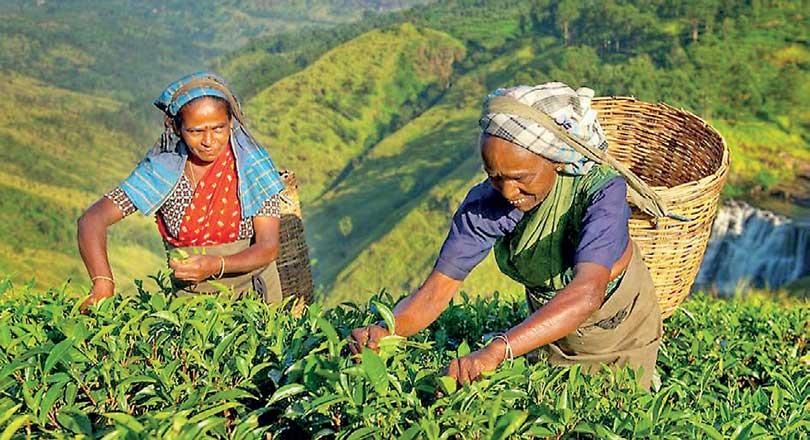17 Jan 2020 - {{hitsCtrl.values.hits}}

By Nishel Fernando
The Sri Lanka Tea Board (SLTB) forecasts a minimum 10 percent growth in tea output with 340 million kgs of tea production and over Rs 250 billion export earnings for 2020, focusing on enhancing Ceylon Tea quality with an integrated quality and productivity drive and measures to increase good leaf count while encouraging more value-added exports over bulk tea exports.
The SLTB along with industry stakeholders are currently finalising strategies and targets for 2020 and beyond.
“Both 2018 and 2019 have been flat years for Ceylon Tea and there has not been any growth at all. The tea industry both in terms of production and exports hasn’t met the targets. However, all the stakeholders have now realised the need to get together and reach consensus to improve the entire value chain. I’m positive that the targets can be achieved with quality in mind,” the SLTPB, Chairman, Jayampathy Molligoda told Mirror Business recently.
He estimated the tea output for 2019 is around 304 million kgs similar to 2018 levels and tea export earnings at around Rs. 241 billion, marginally above Rs. 231 billion recorded in 2018. However, he noted that tea export earnings in dollar terms might have declined during 2019 from US$ 1.43 billion recorded in 2018. The industry analysts expect tea export earnings to hover around US$ 1.3-1.4 billion for 2019.
Sri Lanka was chasing a 310 million kgs tea output with a US$ 1.5 billion export earnings target for 2019.
SLTB on third of January this year issued a circular with a supportive booklet to tea manufactures, making it mandatory for them to improve good leaf count to 60 percent (B-60).
“Maintenance of green leaf standards is a must and we have instructed all the industry players to improve the good leaf count to B-60. The current standard is very poor and it will be improved and there will be no compromise on that. This will pave the way for tea manufacturing plants and other value chains to improve the overall product quality,” Molligoda noted.
Speaking to Mirror Business, SLTB Tea Commissioner E.A.J.K. Edirisinghe stressed that the industry stakeholders will be required to comply with the D-60 standard within a maximum two month period.
“We are planning to implement it within next two weeks. Our propaganda campaign will continue for two months. There should be an incremental growth, that’s what we are monitoring. When the quality improves, their (small holders and tea factory owners) share will be increased by getting a better Net Sale Average (NSA). It will be a win-win situation for both small holders and tea factory owners,” he added.
Molligoda emphasised that tea planters also have a key role in maintaining the quality of Ceylon Tea.
“We briefed the Planters Association today on our decision. They were very happy with our decision. The smallholders will be informed about it via the Tea Small Holdings Development Authority and the Tea Smallholders Association. It’s not only the tea factories; it has to be implemented by the growers, because if they supply bad leaves, we won’t be able to maintain the 60 percent,” he added.
Initially, SLTB in 2014 implemented the B-Leaf 60 programme which increased the immature and undamaged leaves entering into production from 33 percent to over 60 percent, while drastically reducing the coarse leaves used.
However, Edirisinghe pointed out that the best leaf count is around 45-50 percent now.
“Earlier, we exceeded 60 percent best leaf count, but again, due to some issues, it came down to 35-40 percent range,” he lamented.
Meanwhile, speaking to Mirror Business, a top official of Sri Lanka Tea Factory Owners Association stressed that the tea factories will require time to adhere to the D-60 standard.
Molligoda emphasised that the need for better green leaf standards emerged from the Ceylon Tea industry.
“It emerged from the industry; however, we (SLTB) took the initiative to send out quick guidelines on the need to improve good leaf count to 60 percent,” he added.
He warned that if the tea factories fail to meet the minimum standards, they will be punished by the market itself.
“There is enough regulation to take drastic action against factories, following the two month transition. However, if they maintain below 60 percent good leaf count, they will get lower prices and the leaf suppliers would also stop supplying leaves to those factories due to low prices,” he said.
He pointed out that the Ceylon Tea share in key markets such as Middle East, Russia and Japan has come down significantly and an uptick could be witnessed only in a handful of markets such as China.
According to the Tea Exporters Association (TEA), Ceylon Tea exports to Turkey, Iraq, Iran and Russia which are among top five markets for Ceylon Tea have declined during first 11 months of last year.
“Quality is key. It should be our strategy to capture a larger market share in dollar terms with value additions,” he stressed.
Molligoda has been closely working with key industry stakeholders including the Colombo Tea Traders’ Association, Tea Exporters Association, Sri Lanka Tea Factory Owners Association, Tea Small Holdings Development Authority, Tea Smallholders Association and Planters’ Association in order to formulate a target for the year with an effective strategy.
Currently, a 10-year strategic plan and roadmap is in the making under a public-private sector collaboration to boost the
tea industry.
15 Nov 2024 15 Nov 2024
15 Nov 2024 15 Nov 2024
15 Nov 2024 15 Nov 2024
15 Nov 2024 15 Nov 2024
15 Nov 2024 15 Nov 2024